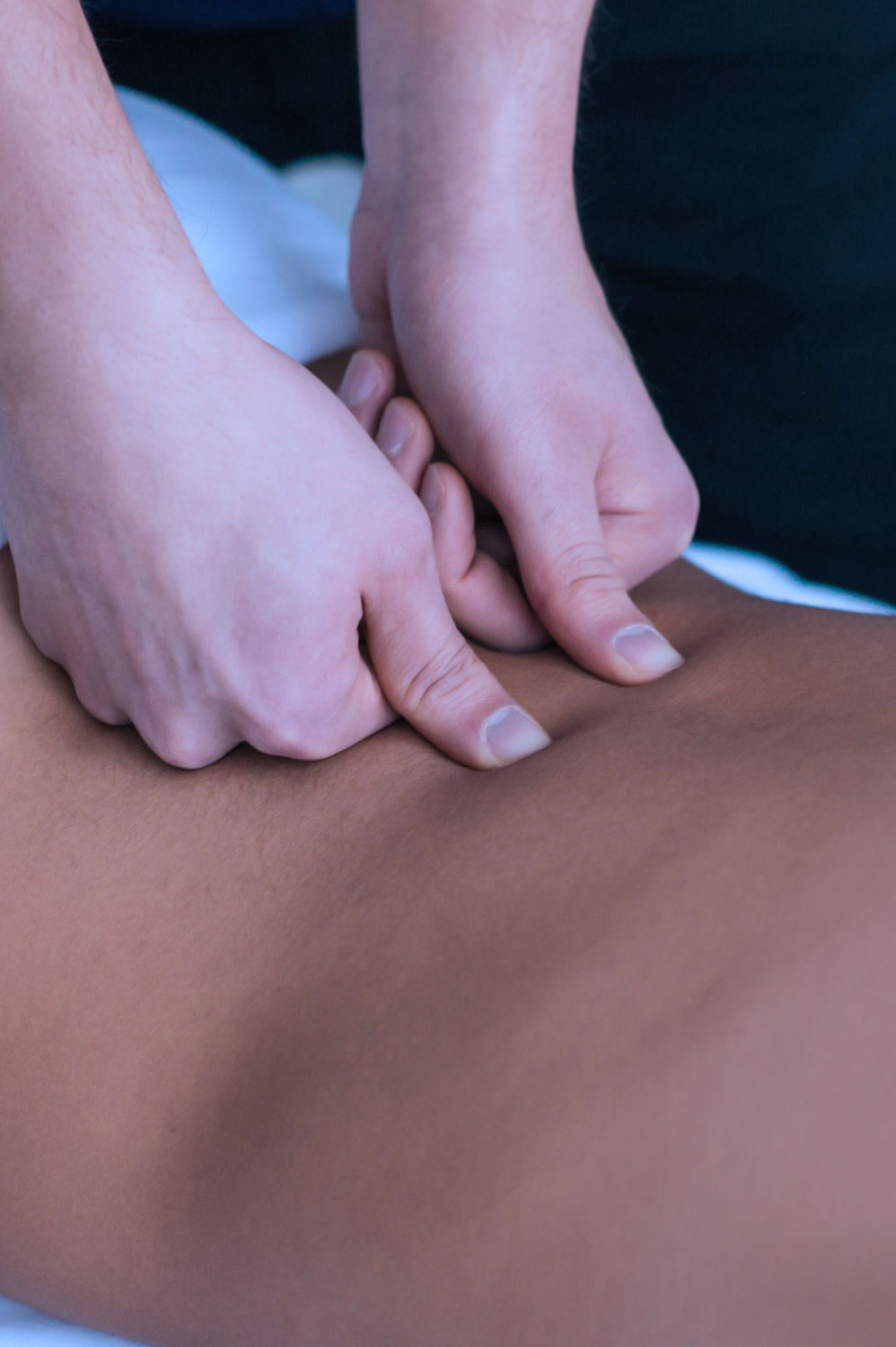Find a therapist
The Network of professional massage therapists of Quebec brings together more than 8,000 massage therapists
Member and insurer access
Find a therapist
The Network of professional massage therapists of Quebec brings together more than 8,000 massage therapists
Low back pain is pain located in the lumbar region (the lower back) whose origins may be diverse : vertebral, nervous, muscular, disc, articular, ligamentous or osseous. It is very often accompanied by muscular contraction around the affected area, which is in fact a mechanism of protection.
The lumbar region is the part of the back that extends between the 12th dorsal vertebrae and the sacrum. The lumbar vertebrae, a total of 5, are the largest in the vertebral column and are held together by powerful ligaments and an impressive muscle mass. Between each vertebra stands an intervertebral disc, composed of spongy material used as shock absorber between vertebrae. Finally, between each vertebra, there is a nervous exit which allows the innervation of the lower limbs.

A muscle, tendon or ligament lesion may be caused by unusual exertion, abrupt movements or repetitive gestures. A physically demanding job, badly adapted workplace or physical inactivity increases the risk of suffering from this type of back pain.
Herniated disc can occur during pregnancy due to a change in posture, intervertebral disc’s degeneration or excess weight. A herniated disc is the outward displacement of the intervertebral disc center, which compresses the nerves roots and causes pain.
Sciatica is a lumbar pain often caused by a herniated disk that compresses the sciatic nerve. The pain continues on one side of the body along the thigh and can go down to the toes.
Some diseases such as arthritis, osteoarthritis, osteoporosis or fibromyalgia may also be the source of back pains as well as a spine deviation such as hyper lordosis or scoliosis.
The therapist is a muscle and joint specialist. His solid training allows him to efficiently act on several back affections. Following the interview, the therapist will use, in appropriate cases, a massage to warm up tissues, reduce contractures and increase blood flow; essential oils and rubefiants (products with a muscular effect) as well as kinesitherapy techniques to restore the back’s full amplitude and mobility.
To complete the session and help avoiding any relapses or back injury, the therapist will recommend exercises for muscle rehabilitation. If your condition requires it, the therapist will recommend an assessment with another specialist or doctor.
The term therapist is used to signify a massage therapist, a kinesitherapist or an orthotherapist.
It is important to take note that your therapist cannot perform pathology diagnostics since only doctors have the competence to make a medical diagnosis. However, your therapist may act effectively to relieve your back pain.
Find a therapist